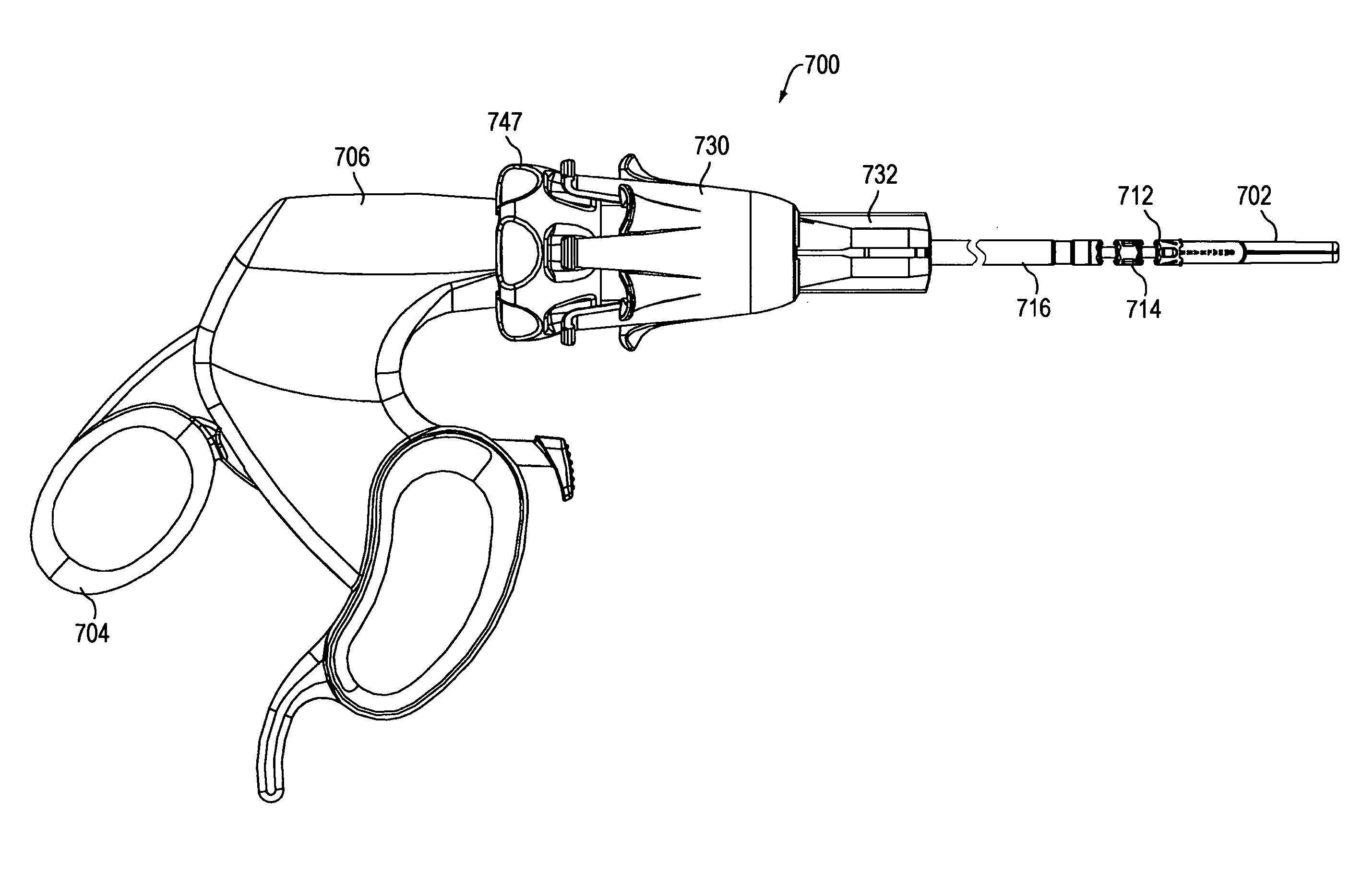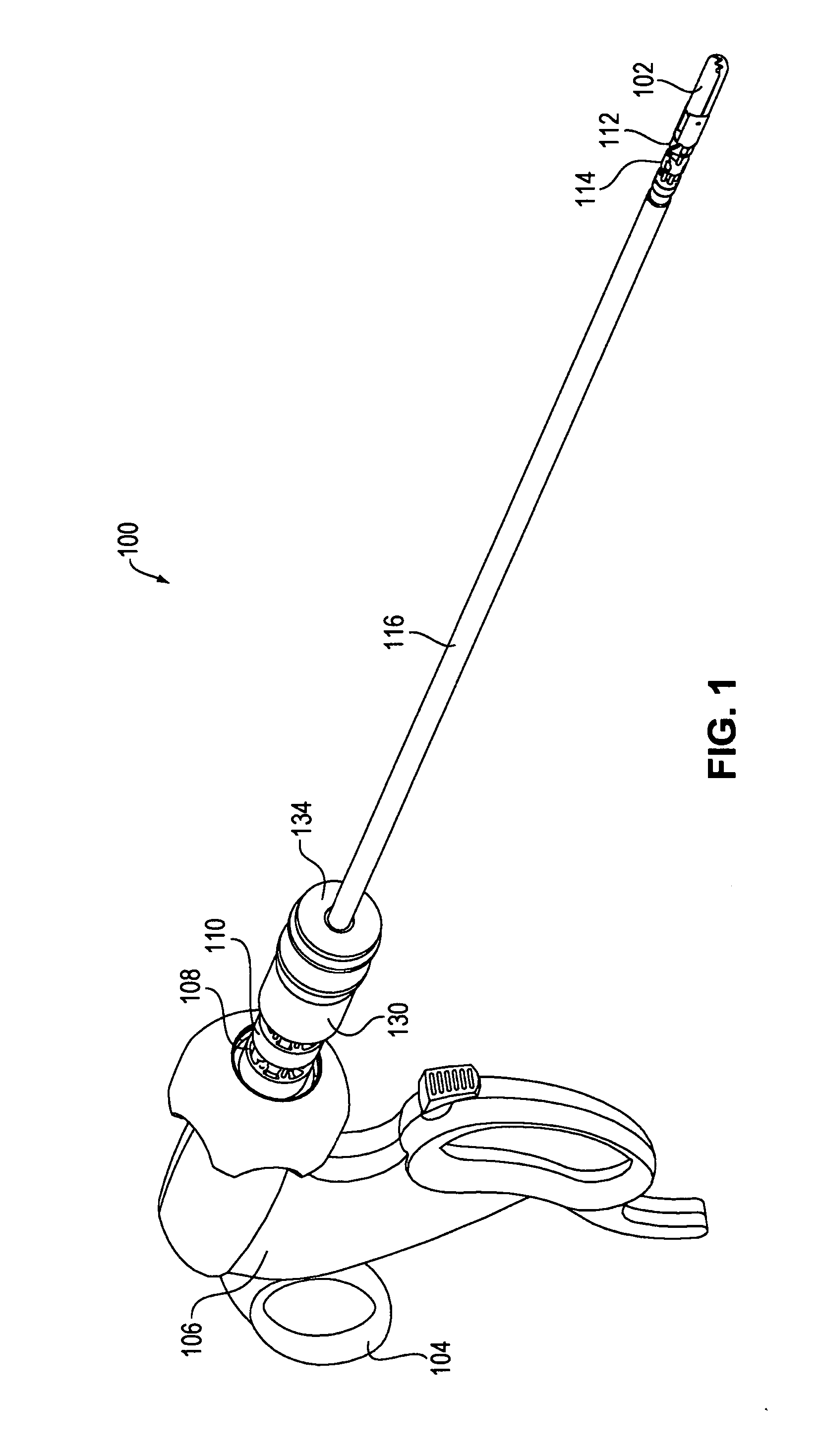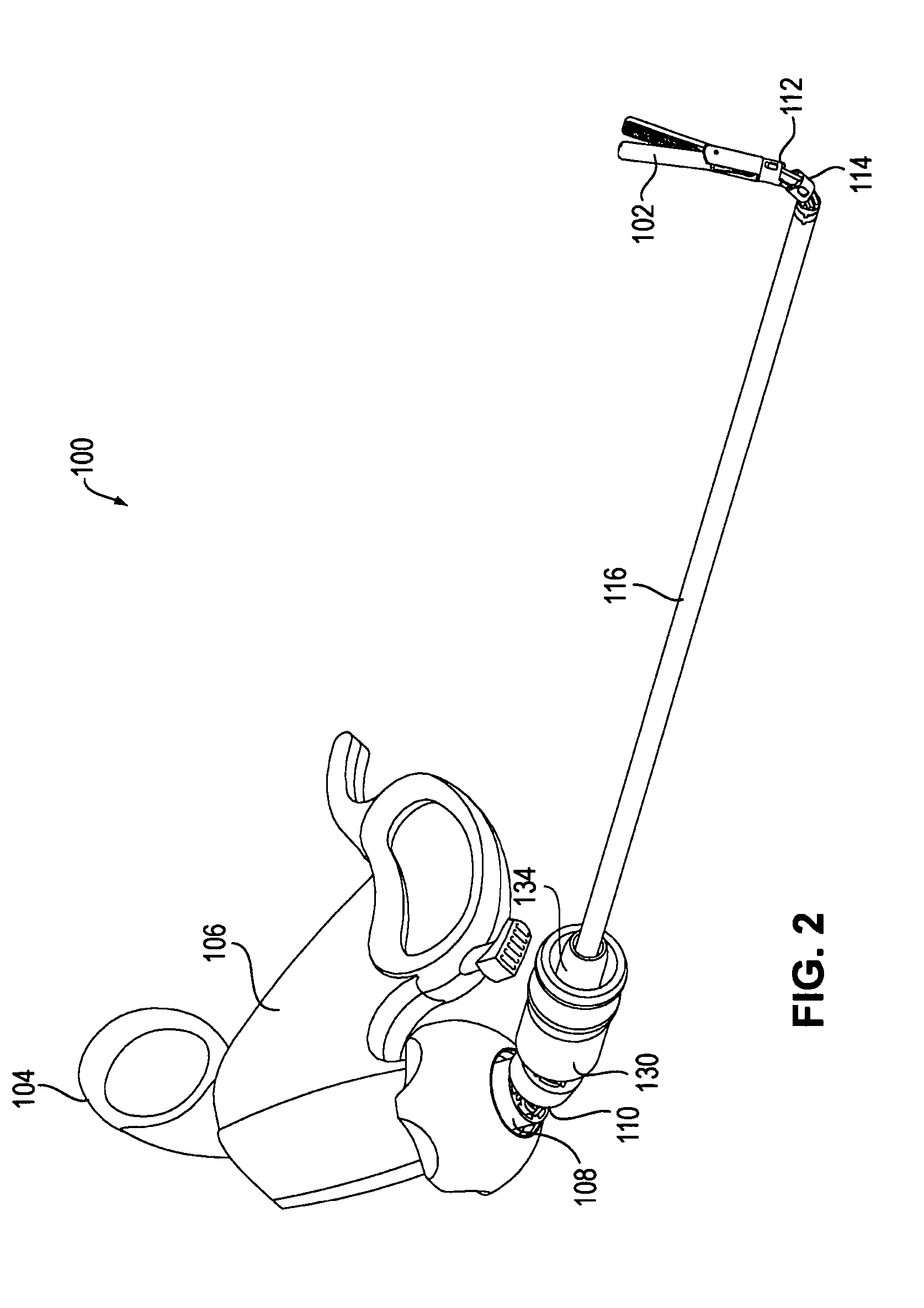Tool with articulation lock
a technology of articulation lock and tool, which is applied in the direction of surgical instrument support, application, surgical forceps, etc., can solve the problems of increasing the risk of trauma to surrounding tissues, increasing patient discomfort, and increasing the risk of injury to surrounding tissues, so as to increase the tension of cables, and increase the effect of cable tension
- Summary
- Abstract
- Description
- Claims
- Application Information
AI Technical Summary
Benefits of technology
Problems solved by technology
Method used
Image
Examples
Embodiment Construction
Articulating Instruments
[0079]Steerable articulating instruments are described in U.S. Pat. No. 7,090,637; US 2005 / 0107667; US 2005 / 0273084; US 2005 / 0273085; US 2006 / 0111209, and US 2006 / 0111210. The articulating mechanisms of the tools described in those publications use multiple pairs of segments or links controlled, e.g., by multiple sets of cables, as well as tools that have a single pair of links, connected by a single set of cables, such as those described in U.S. Pat. No. 5,916,146. Depending upon the specific design of the device, the links can be discrete segments (as described, e.g., in U.S. Pat. No. 7,090,637) or discrete portions of a flexible segment (as described, e.g., in US 2005 / 0173085). The instrument may also include steerable or controllable links, e.g., as described in US 2005 / 0273084, US 2006 / 0111209, and US 2006 / 0111210. Embodiments of the invention are not specific to any particular type of link, and may include any type of link known in the art.
[0080]When us...
PUM
 Login to View More
Login to View More Abstract
Description
Claims
Application Information
 Login to View More
Login to View More - R&D
- Intellectual Property
- Life Sciences
- Materials
- Tech Scout
- Unparalleled Data Quality
- Higher Quality Content
- 60% Fewer Hallucinations
Browse by: Latest US Patents, China's latest patents, Technical Efficacy Thesaurus, Application Domain, Technology Topic, Popular Technical Reports.
© 2025 PatSnap. All rights reserved.Legal|Privacy policy|Modern Slavery Act Transparency Statement|Sitemap|About US| Contact US: help@patsnap.com



